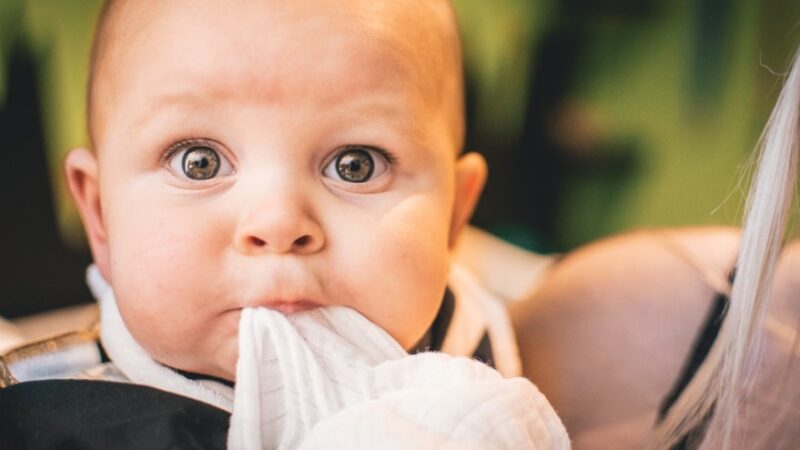Teething bites. Literally. If there is one stage of infant development that I dread most, it is most definitely teething. Most babies usually start teething somewhere between 4 and 7 months, but can be as early as 3 months and as late as 15. Each baby’s experience is so different, but there are some common symptoms that are normal, some that need a closer eye, and possibly a visit to your doctor or pediatrician.
How To Tell If My Baby Is Teething
- Drooling – Babies around 3 months start to drool, so this may or may not be related to teething
- Sucking – Can help relieve gum pain
- Biting – Also helps relieve pain on the gums
- Sudden waking through the night – Baby will be woken by mouth discomfort
- Teething rash – Due to the increased saliva around the mouth. Usually the red, chapped rash
- Diaper rash – Can be caused by a change of appetite and diarrhea
- Gagging and coughing – Due to an increase in saliva production
- Crying and irritability – Triggered by pain from teeth coming through gums
How Can I Help?
As mothers, we hate to see our babies in pain. Here are some great ways that you can help your little one through this tough time.
- Cold washcloth – Dip in cold water, or make ahead and store in the fridge and roll up and give to baby to chew on. The chewing motion creates counter-pressure on the gums, and the cold cloth feels good on inflamed and swollen gums.
- Teething toys – These come with different textures to gnaw on and create counter-pressure on the gums to relieve pain. Keep these in the fridge as well and offer them to baby chilled. Avoid putting them in the freezer, as they can break open when frozen, and cause damage to the baby mouth if too cold.
- Massaging your babies gums – Wash your hands and give baby a finger to chew on
- Pain Relievers – If your baby is old enough, you can give small amounts of Ibuprofen or Tylenol to help ease the pain
What Should I Avoid?
- Amber Teething Necklaces – As adorable as these little babies are, they are a huge choking hazard. There are not enough studies to show whether these work or not, it is unlikely that babies body would get warm enough to release the succinic acid in the amber to have a pain-relieving effect.
- Numbing Gels & Creams – If you choose to use one of these, try to find products without benzocaine or belladonna which both can be toxic to infants
- Teething Tablets – Again, check the ingredients and avoid benzocaine, and belladonna.
What About Fever?
A lot of parents just assume that fever goes along with the joys of teething. They are not 100% wrong. Your baby may develop a low low fever during this time, but usually, only on the day the tooth erupts through the gums and can easily be controlled and won’t stick around for long.
So when should I take my baby in?
- If your baby has a high-grade fever
3 to 6 months – 101F or higher
6 months + – 103F or higher - If the baby is lethargic
- If baby refuses to eat
- If the baby has rash along with fever
- Dehydration – one wet diaper in 8 hours
- Sunken soft spot on the head
- Seizure
- Fever not controlled by fever-reducing medication
Bottom Line
Teething is not an enjoyable time for anyone. Have teething toys on hand and ready to go before you notice the first signs of so you are well-prepared when the day hits. I found them on sale and loaded them up. We keep them in the fridge at all times and constantly rotate throughout the day. Try to find shapes that your baby can hold on to and get into their mouth easily. This is a hard time for your baby, give them that extra cuddle or extra attention that they may need during this time, and remember IT WON’T LAST FOREVER!
If you have any other great teething tips please leave them below! I would love to hear what works well for you!






